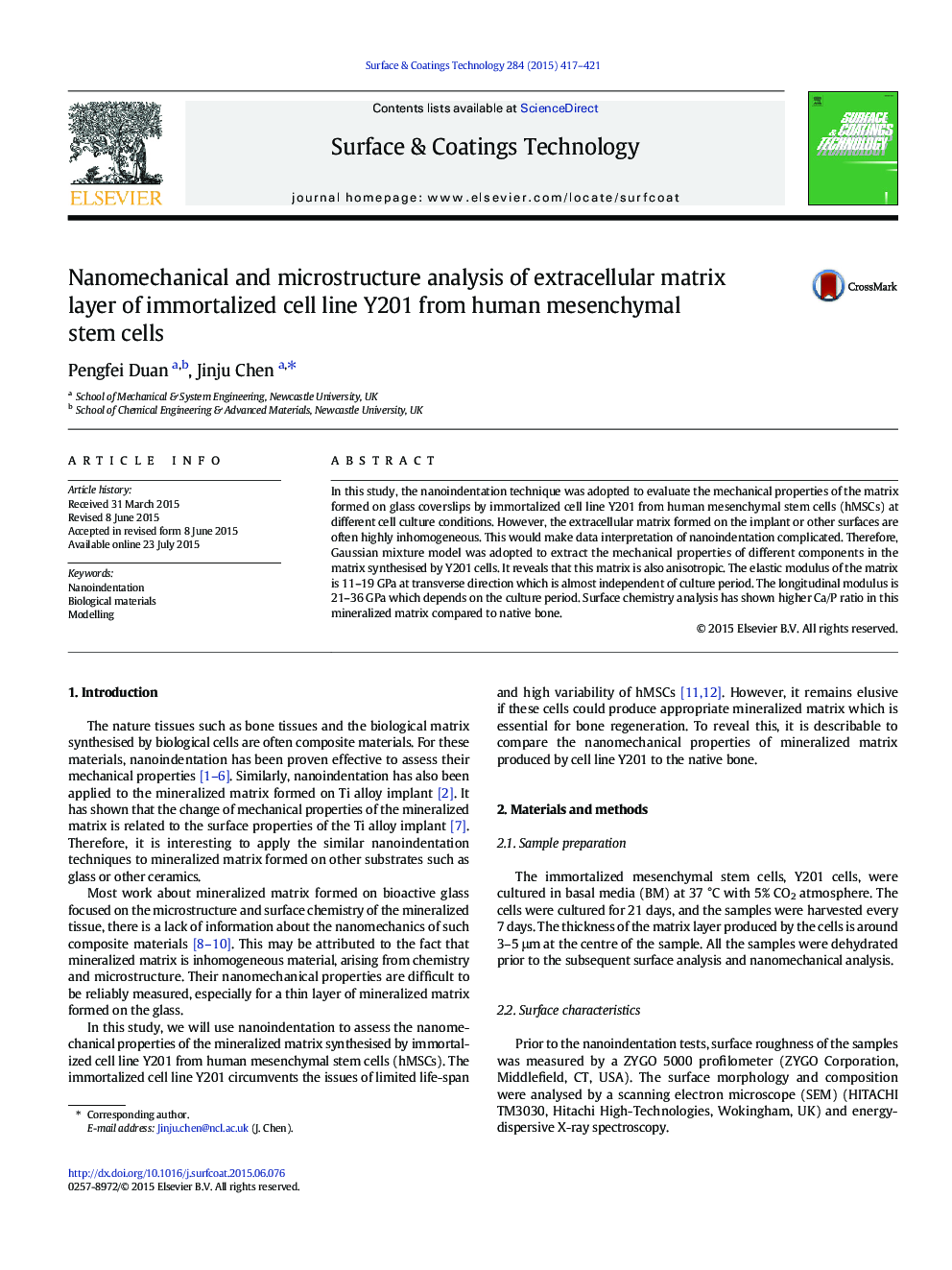| Article ID | Journal | Published Year | Pages | File Type |
|---|---|---|---|---|
| 1656644 | Surface and Coatings Technology | 2015 | 5 Pages |
•Nanoindentation tests were used to assess elastic modulus of matrix synthesised by immortalized cell line Y201.•Gaussian mixture model was adopted to extract elastic modulus of key components.•The indentation modulus of such mineralized matrix is anisotropic.•Such mineralized matrix has higher longitudinal modulus compared to the native bone.•The Ca/P ratio in this mineralized matrix is similar to that in native bone.
In this study, the nanoindentation technique was adopted to evaluate the mechanical properties of the matrix formed on glass coverslips by immortalized cell line Y201 from human mesenchymal stem cells (hMSCs) at different cell culture conditions. However, the extracellular matrix formed on the implant or other surfaces are often highly inhomogeneous. This would make data interpretation of nanoindentation complicated. Therefore, Gaussian mixture model was adopted to extract the mechanical properties of different components in the matrix synthesised by Y201 cells. It reveals that this matrix is also anisotropic. The elastic modulus of the matrix is 11–19 GPa at transverse direction which is almost independent of culture period. The longitudinal modulus is 21–36 GPa which depends on the culture period. Surface chemistry analysis has shown higher Ca/P ratio in this mineralized matrix compared to native bone.
